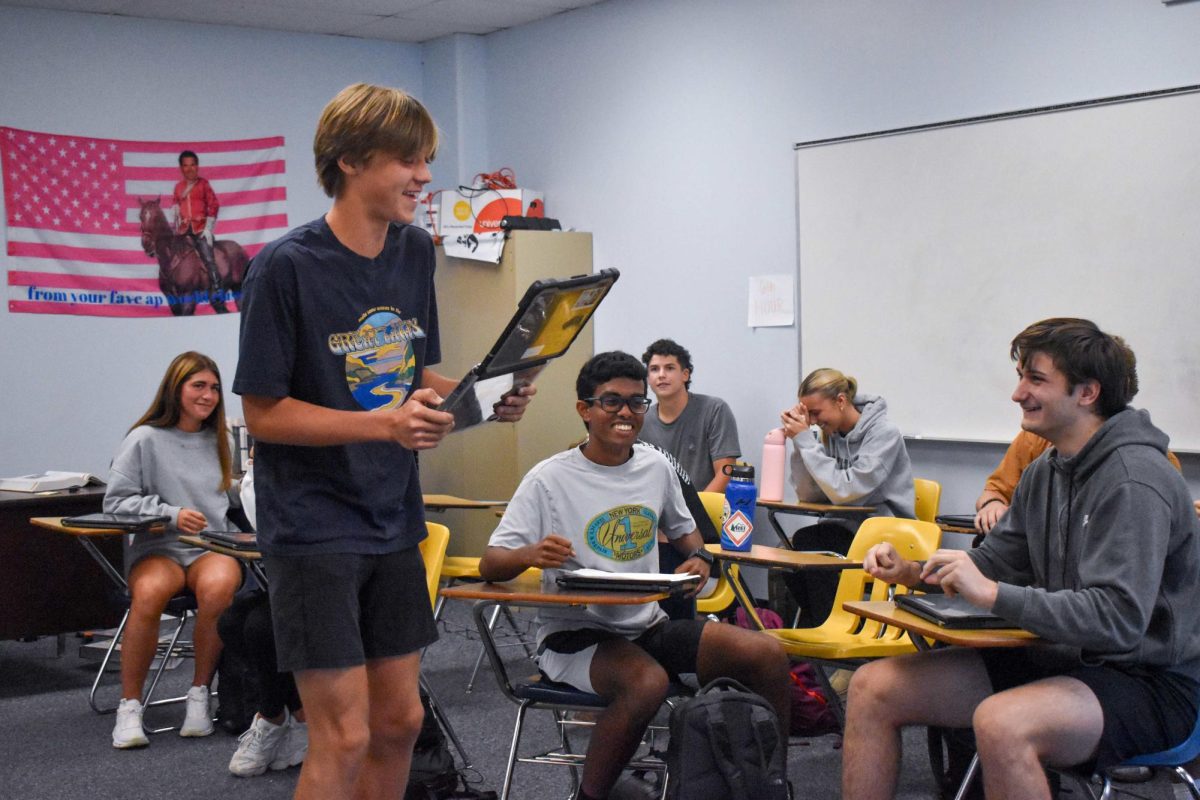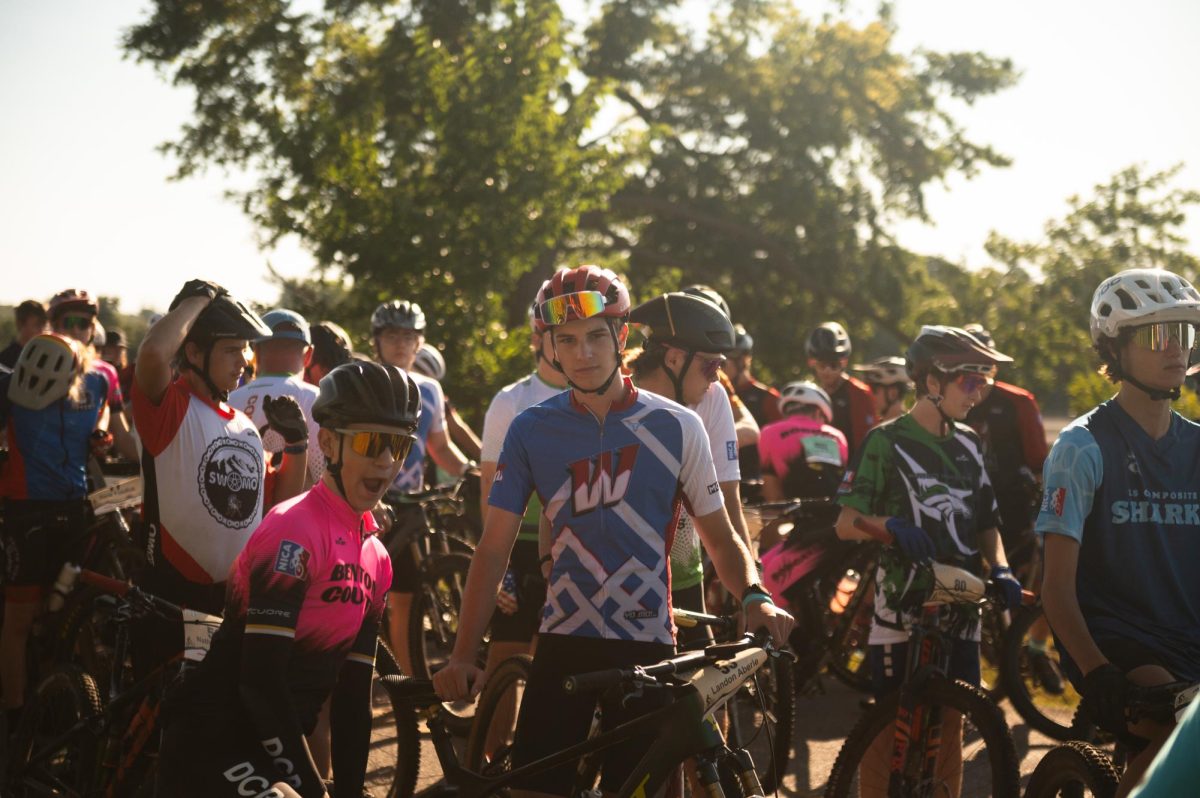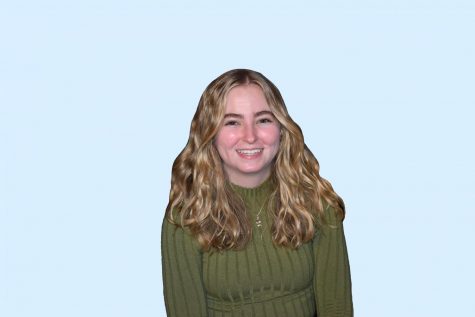While most students dread the thought of writing a research paper, sophomore Anjali Shah got a head start on her future last fall by writing a textbook passage about ophthalmology and an informational article on retinas. To do this, Shah worked with graduate students training to become retina doctors from across the country.
“[The graduate students] did the study on the effects of the eclipse on the retina. They got the actual data. I’m just processing it and doing research on it,” Shah said. “I want to have exposure to many different types of science, like lab work and research. I want to see if I can narrow down my options, so I can look more towards the future.”
Although Shah does not necessarily want to go into the medical field, she felt that the opportunity to collaborate with graduate students and research in the STEM field would be beneficial for future endeavors.
“I wanted to just get some more research experience because I want to do something in the STEM field. I’m kind of just weighing my options to decide what I want to do in the future,” Shah said. “Right now I’m looking towards engineering, but [my research] is still very relevant to that because you have to do the same type of research in other fields.”
While working on a research essay in English, Shah saw the similarities and differences between the work she did outside of school and the work she is doing in the classroom.
“Seeing how field work gets put into a published paper was really interesting. I think that’s been the most interesting part, especially as we’re going through writing research essays in English,” Shah said. “It’s really interesting because the work that I’ve done on my own—editing, revising, going back, doing more research—is the same kind of process but on a different level.”
Shah first became interested in STEM in elementary school, where she excelled in math and science.
“Math and science are my thing. I just get it—it makes sense to me,” Shah said. “All throughout elementary and middle school my interests were always something science-related. I was into Geology, then I was interested in architecture. Now I don’t know what field I want to go into, but I want it to be something in STEM.”
Because her dad is a doctor, Shah has been able to see the work he has done all throughout her childhood. ¬Ý¬Ý¬Ý
“I’ve seen the opportunities that he gets by looking at what he does and shadowing him in his office to see what a day in the life would be,” Shah said. “That’s really when my interest peaked, because I saw how many freedoms you could have.”
Despite all the research and writing Shah has already done, she is continuing to follow her passion for science through science classes at school and summer projects.
“I’ve started to explore all the electives, and I’m thinking of potentially doing Spark! next year or senior year. I think that will really help narrow down what field specifically I want to go into,” Shah said. “This summer I’m planning on working for one of the professors at [Washington University] in his lab for nanotechnologies.”
Shah’s article, titled “Bilateral Solar Retinopathy after Gazing at The Great American Eclipse,” is currently in the process of being reviewed by online magazines and organizations, and she hopes it will soon be published.
“I’m proud of the work that I’ve done, and I think it was a good experience because I got exposed to real-life situations,” Shah said. “I love how hands-on science is compared to subjects like history. I like science because it’s what I have a passion for.”

![Typing on her laptop, Shah looks over the work she has done. Her research surrounds ophthalmology, and she has worked with graduate students studying the effect of the eclipse on retinas. “I got involved because my dad got me in contact with a few people, but then I reached out to more people at [Washington University] to see if I could help them work,” Shah said.](https://pwestpathfinder.com/wp-content/uploads/2018/03/DSC_0020-2-900x648.jpg)


![Freshman Daphne Stokes looks at a table with Veterans Day flyers and information on Nov. 11. Stokes, along with other West High students, like senior Alexander Lewinski, passed by the table in the cafeteria with army recruitment information and giveaways for students to observe during lunch. “Talking with [the recruiters] has definitely helped me [find] where I wanted to go, more than anything else,” Lewinski said.](https://pwestpathfinder.com/wp-content/uploads/2025/11/DSC_1227-2-1200x800.jpg)
![Helping a customer, print room assistant Gretchen Williams operates her booth at the West High Craft Fair from Oct. 25-26. This was Williams’ first time participating in the Craft Fair with her new craft shop, Gs Beaded Boutique. “People have always said, over the years, ‘you should open something.’ [I replied that] I would rather just make [my crafts as] gifts for people. I just started [the online store] up, and it's been okay. I'm always surprised [by] how many views I get and [the] people from different states buying things; somebody from Alaska bought something the other day.”](https://pwestpathfinder.com/wp-content/uploads/2025/11/DSC0451-2-1200x799.jpg)
![Gesturing toward the club’s name on the board, Global Youth Aid co-president year Daniah Alsagheer discusses upcoming service projects with members during a meeting on Oct. 30. “We might be one club at one school, but together, we’re [part of] something much bigger,” Alsagheer said.](https://pwestpathfinder.com/wp-content/uploads/2025/11/DSC00949-1200x800.jpg)
![Focused on providing exceptional service, sophomore Darsh Mahapatra carefully cleans the door of a customer’s car. Mahapatra has always believed his customers deserve nothing less than the best. “[If] they’re trusting us with their car and our service, then I am convinced that they deserve our 100 percent effort and beyond,” Mahapatra said.](https://pwestpathfinder.com/wp-content/uploads/2025/10/DSC_0018-1200x800.jpg)
![Sophomore Aleix Pi de Cabanyes Navarro (left) finishes up a soccer game while junior Ava Muench (right) warms up for cross country practice. The two came to Parkway West High School as exchange students for the 2025-2026 school year. “The goal for the [exchange] program is to provide opportunities for both Parkway students and our international exchange students to learn about other cultures, build connections and become confident, capable, curious and caring — Parkway’s Four C’s — in the process,” Exchange Program Lead Lauren Farrelly said.](https://pwestpathfinder.com/wp-content/uploads/2025/10/Feature-Photo-1200x800.png)

![Gazing across the stage, sophomore Alexis Monteleone performs in the school theater. The Monteleone family’s band “Monte and the Machine” has been releasing music since 2012, but Alexis started her own solo career in 2024 with the release of her first single, Crying Skies. “My whole family is very musical, [and I especially] love writing [songs with them],” Monteleone said.](https://pwestpathfinder.com/wp-content/uploads/2025/09/DSC7463-1200x798.jpg)
![Amid teaching a lesson to her AP Calculus BC class, Kristin Judd jokes alongside her students in their funny remarks. Judd has always enjoyed keeping the mood light in her classroom, along with on the volleyball court. “[I enjoy] that side talk where you see [or] overhear a conversation and chime in, or somebody says something funny,” Judd said.](https://pwestpathfinder.com/wp-content/uploads/2025/09/image-1200x730.jpg)
![Eyeing the ball, junior Ella McNeal poses for her commitment pictures at Clemson University. McNeal’s commitment comes after months of contact with top Division 1 soccer programs. “ It has taken a lot to get to where I am, but I know that [what] I've already been through is just the beginning, and I can't wait for what is to come,” McNeal said.](https://pwestpathfinder.com/wp-content/uploads/2025/09/IMG_4926-1200x900.jpeg)
